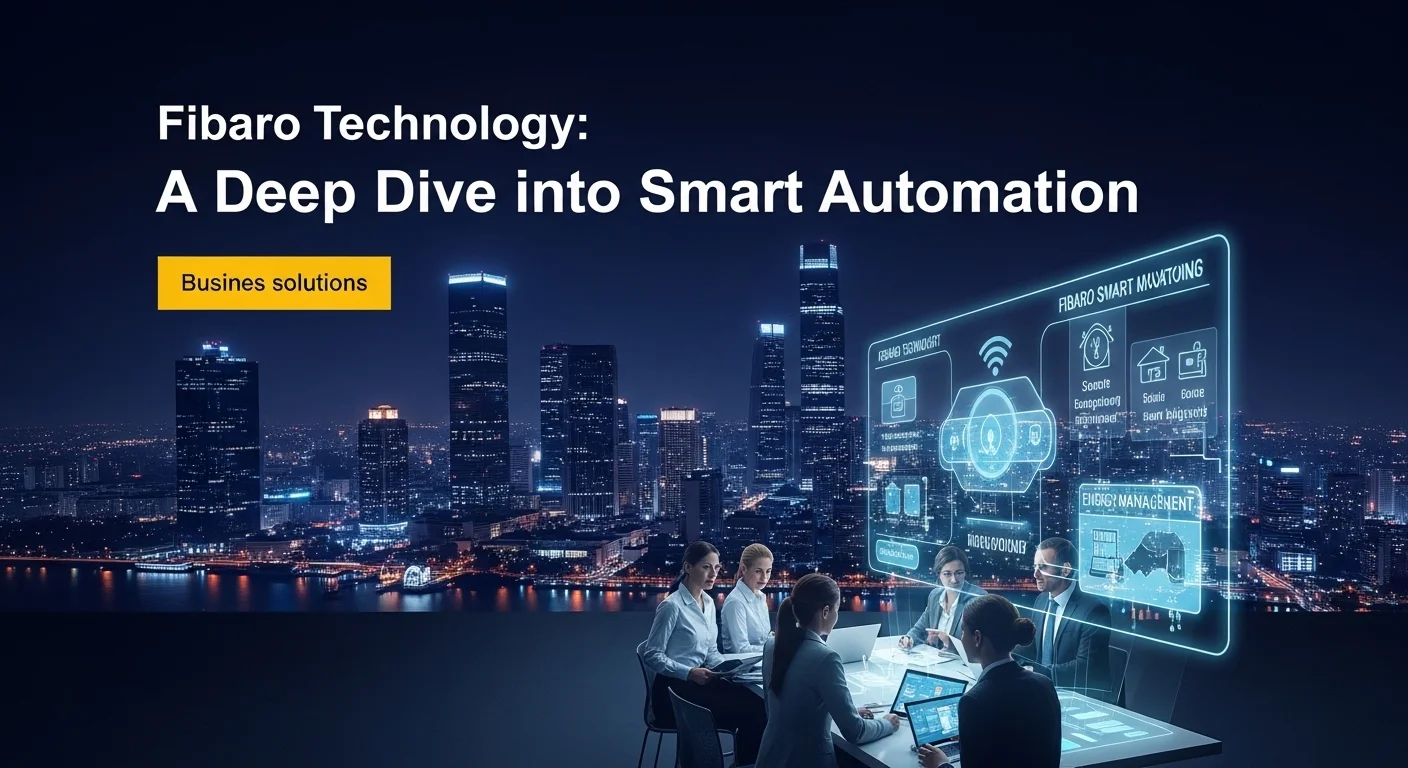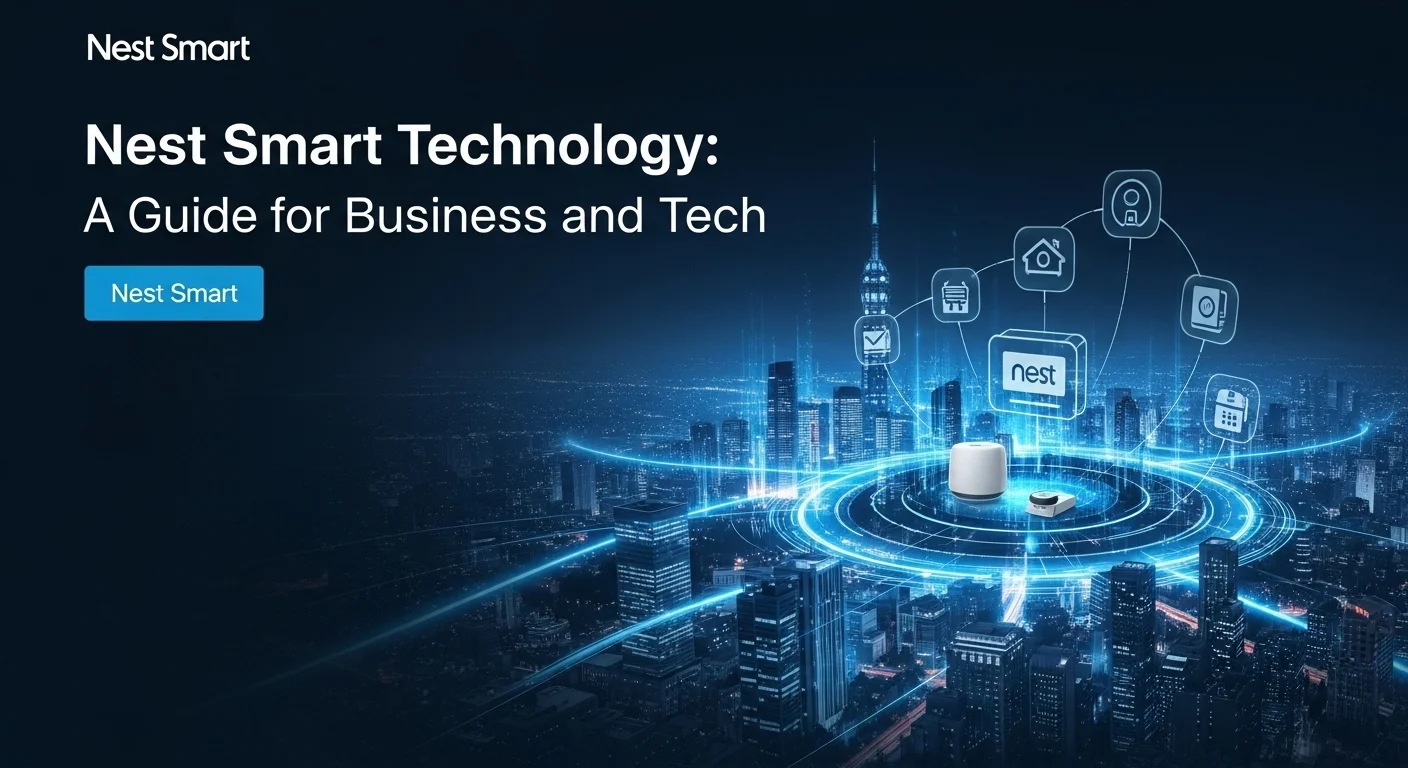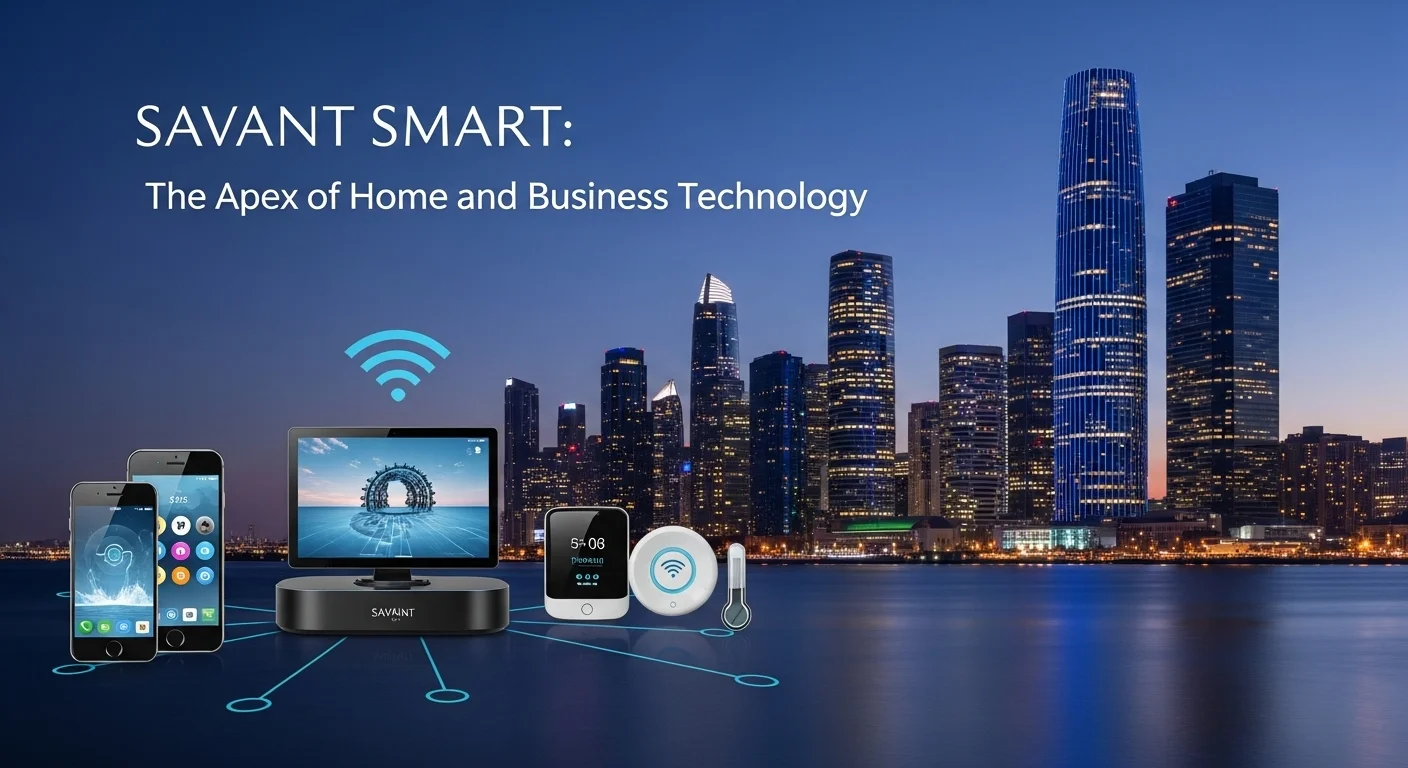Fibaro Explained: My Guide to Building Smarter Spaces

Executive Summary
Over my years working in smart building integration, I've seen countless technologies promise to change the world. Few deliver on that promise as elegantly and reliably as Fibaro. This isn't just about turning lights on with your phone; it's about creating an environment that responds to you. In this guide, I'm going to pull back the curtain on the Fibaro ecosystem. We'll explore how its core technology, Z-Wave, creates a rock-solid foundation for automation. I'll share my experiences on how businesses and homeowners alike can leverage this system to not only add convenience but to genuinely improve security, save on energy costs, and gain powerful insights. We'll look at the 'brain' of the operation, the Home Center 3, and see how it orchestrates everything. My goal is to give you a clear, no-nonsense understanding of how Fibaro can transform a simple space into a truly smart, responsive, and efficient one.
Table of Contents
Table of Contents
- What is Fibaro, Really?
- The Z-Wave Advantage: Why It's So Reliable
- Beyond Convenience: The Real Value for Businesses
What is Fibaro, Really?
In the world of smart technology, it's easy to get lost in buzzwords. So let's cut through the noise. Fibaro is a complete, wireless ecosystem designed to make your home or office intelligent. Think of it as the central nervous system for your building. It’s a collection of beautifully designed, often tiny, devices that can control nearly anything electric—from lights and heating to security cameras and blinds. I've always been impressed by their Polish design ethos; it's clean, minimalist, and built to be non-invasive. You don't need to tear down walls to make your space smart. For anyone in the tech field, from IT managers to cloud architects, Fibaro is a perfect example of the Internet of Things (IoT) done right: it’s practical, powerful, and scalable.
The real magic behind the system is its reliance on the Z-Wave protocol. I've worked with many wireless technologies, and Z-Wave has consistently proven itself in professional installations. Unlike your home's Wi-Fi, which juggles everything from Netflix streams to video calls, Z-Wave operates on its own dedicated, low-energy frequency. This means no interference from your other gadgets. Its best feature, however, is the mesh network. Imagine your devices are part of a team, passing a message along from one to the next until it reaches its destination. Every device you plug into the wall acts as a signal booster for the others. This creates an incredibly resilient, self-healing network that gets stronger and more reliable with every device you add. For a business where system failure is not an option, this level of reliability is paramount. It's a key reason I recommend it for critical applications.
The Importance of Fibaro in the Broader Tech Landscape
Fibaro is more than just a set of remote controls. It's a powerful data-gathering tool that can fuel business intelligence. Every sensor in the network—detecting motion, temperature, light, or energy use—is collecting valuable information. When you start to analyze this data, you unlock a new layer of 'home intelligence.' It's not just about turning lights off when a room is empty; it's about creating an environment that learns and adapts. For a business, this could mean seeing data that shows a particular conference room is always too cold, leading to shorter, less productive meetings. Or identifying a faulty piece of equipment that's secretly draining electricity overnight. This is where automation becomes truly intelligent. The system can proactively send an alert if a server room's temperature spikes, potentially saving thousands in damaged hardware. It can learn your office's daily rhythm and optimize the climate control for both comfort and cost savings. By connecting this physical data to cloud platforms via APIs, you can create custom dashboards and even use AI to predict future needs, transforming your building from a static cost center into a dynamic, data-rich asset.
Business Applications and Tangible Benefits
While the 'wow' factor is high in luxury homes, I've seen Fibaro deliver its most significant impact in commercial settings. In a smart office, automation creates an effortless workflow. Imagine booking a meeting room, and the system automatically turns on the lights, sets the blinds, and powers up the presentation screen just before you arrive. Once the room is empty, it powers everything down. I've implemented this for clients, and the feedback is always phenomenal—not just for the convenience, but for the noticeable drop in energy bills. In hotels, it allows for centralized control over energy use while giving guests a premium, personalized experience. For property developers, building in a Fibaro system is no longer a luxury; it's a key differentiator that adds real value through enhanced security, comfort, and efficiency. The benefits are tangible and measurable: lower operating costs, better security, happier employees or guests, and invaluable data. The heart of these commercial setups is invariably the Fibaro Home Center 3. It's a beast of a controller, powerful enough to manage hundreds of devices and complex scenes, making it perfect for the demands of a business. Its compatibility with thousands of other devices means it can integrate with the systems you already have, making it a smart, future-proof investment.

A Practical Look at the Fibaro Ecosystem
To truly grasp Fibaro's capabilities, you need to understand the components that make it tick. It all starts with the controller, the 'brain' of the operation. The flagship, the Fibaro Home Center 3, is a dedicated server built for one purpose: running your smart building flawlessly. I appreciate that it has its own secure operating system and can run essential automations even if your internet goes down. For business continuity, that's huge. The controller is the conductor of the orchestra, communicating with all the individual devices using Z-Wave and other protocols like Zigbee to create a unified system. It's on this platform that you build all your automation 'scenes,' from simple schedules to complex, conditional logic.
The Fibaro Ecosystem: A Symphony of Devices
The beauty of the Fibaro ecosystem is in the thoughtful design of its devices. They're built to be discreet and powerful, allowing you to retrofit intelligence into any building without an invasive overhaul. I've often called them the 'senses' and 'muscles' of a smart building.
- The Senses (Sensors): These are the eyes and ears of your system. The Fibaro Motion Sensor is a classic example; it's a tiny, elegant eyeball that detects not just movement but also temperature, light levels, and even seismic vibrations. I've used them for everything from security alerts to automating bathroom extractor fans based on humidity. Other key sensors include the Flood Sensor, a lifesaver that can prevent catastrophic water damage, and the Door/Window Sensor for security and climate control.
- The Muscles (Actuators & Modules): These are the devices that do the work. My favorite has always been the in-wall modules like the Dimmer 2 or Double Switch. These tiny units fit behind your existing light switches, making them smart without changing how they look. I remember a project for a boutique hotel where these were a game-changer. We could smarten up every suite's lighting without touching the beautiful, historic wall plates. Other workhorses include the Roller Shutter module for controlling blinds, which is fantastic for managing heat from sunlight.
- Smart Plugs & Outlets: The Wall Plug is genius in its simplicity. You plug it into any outlet, and suddenly the lamp or coffee machine plugged into it is smart. More importantly, it monitors energy consumption. For any business looking to conduct an energy audit, these are an invaluable tool for pinpointing wasteful devices.
- Simple Controls: Not everyone wants to pull out a phone to dim the lights. Fibaro gets this. Devices like 'The Button' or the 'KeyFob' offer a simple, physical way to trigger complex scenes. A single press of a Button by the door can initiate a 'Goodbye' scene that turns off all lights, lowers the thermostat, and arms the security system.
When these devices work together, you achieve true building intelligence. For example, a door sensor sees the patio door was left open, and it signals the Home Center 3 to pause the air conditioning in that zone. That's not just a gadget; that's a smart, money-saving solution.
Business Integration and Advanced Techniques
For a business, the real power is unlocked when you integrate Fibaro with your other systems. Fibaro offers a robust API, which is a developer's dream. It allows you to connect the smart building's brain to almost any other business software. I worked with a retailer who integrated their Fibaro system with their employee scheduling software. When the last employee clocks out for the day, the building automatically goes into a low-power 'after hours' mode. It's seamless and saves them a fortune. Compared to many Wi-Fi devices that rely on the cloud and can fail if the internet drops, or Zigbee which can have interoperability headaches, Fibaro's Z-Wave foundation and powerful local controller offer superior reliability. The Home Center 3 now includes Zigbee support, making it an even more versatile bridge to other technologies. For those who want ultimate control, you can use the LUA programming language. It lets you write incredibly sophisticated automation scripts. I've used it to create scripts that check the weather forecast and pre-cool an office on hot days, or run security routines that mimic human behavior much more realistically than a simple timer. This deep customizability is what allows a business to mold the Fibaro system to its exact operational needs, maximizing the return on investment.

My Top Tips for a Successful Fibaro Setup
Getting a Fibaro system running is one thing; making it a truly reliable and intelligent part of your daily life or business operations is another. Over hundreds of installations, I've learned that success comes down to planning and best practices. Here are my essential tips for getting the most out of your investment.
Best Practices for System Planning and Installation
A stable system is built on a solid foundation. Don't rush this part.
- Plan Your Network First: The Z-Wave mesh network is your system's backbone, so build it properly. Place your Home Center 3 in a central location, not tucked away in a metal closet in the basement. When you add devices, start with the ones that plug into the wall (switches, plugs) and are closest to the controller. Work your way outwards from there. These powered devices act as repeaters and will create a strong communication web before you even add your first battery-powered sensor.
- Define Your 'Why': Before you buy a single device, ask yourself what problem you are trying to solve. 'I want to reduce energy costs' is better than 'I want a smart home.' Get specific: 'Automate the office lighting to save 20% on electricity' or 'Get an alert if the server room door is opened after hours.' Clear goals will dictate which devices you need and how you'll program your automation scenes.
- Respect the Wiring: While many Fibaro devices are plug-and-play, anything that connects to your building's main electrical wiring, like an in-wall dimmer, should be installed by a qualified electrician. It’s a matter of safety and code compliance. For any business, I insist on using certified installers to ensure everything is done right from the start.
- Be Obsessive About Naming: Trust me on this one. When you have 100 devices, 'Switch' and 'Sensor' won't cut it. Create a clear naming system from day one, like 'Office-Reception-CeilingLight' or 'Scene-Security-NightMode'. Document your layout and complex scenes. Your future self—or the person who takes over the system from you—will thank you profusely.
Advanced Strategies and Cybersecurity
With the basics in place, it's time to unlock the system's full potential and lock it down from threats.
- Master Advanced Automation: Move beyond basic 'if this, then that.' Use the built-in scene editor to create powerful, multi-layered rules. For example: 'IF it's after 7 PM AND the main office motion sensor has seen no movement for 30 minutes AND the security alarm is OFF, THEN send a notification asking if I want to arm the system.' For the ultimate power, dip your toes into LUA scripting. It lets you write incredibly sophisticated automation scripts. I've used it to create scripts that check the weather forecast and pre-cool an office on hot days, or run security routines that mimic human behavior much more realistically than a simple timer. This deep customizability is what allows a business to mold the Fibaro system to its exact operational needs, maximizing the return on investment.
- Cybersecurity is Not Optional: I can't stress this enough. An unsecured smart system is a liability. Treat its security like you do your online banking. The first things you must do are change the default admin passwords on your Home Center 3 and secure your Wi-Fi network with WPA3 encryption. For businesses, I always recommend putting the automation system on its own, isolated network (VLAN) separate from your core business data. Keep your firmware updated; these updates often contain vital security patches. Be selective about which third-party services you connect to your system.
- Connect to a Bigger Brain: Real intelligence happens when you analyze the data. Use Fibaro's API to send data like energy usage or room occupancy to a platform like Microsoft Power BI or Google Data Studio. There, you can visualize trends you'd never see otherwise. I've seen clients use this data to redesign their office layout for better collaboration or prove the need for new equipment.
- Keep an Eye on the Future: The smart home world is moving towards a new standard called Matter, designed to make devices from all brands work together. The good news is that powerful, multi-protocol controllers like the Home Center 3 are well-equipped to adapt to these changes. Staying informed about industry shifts will ensure your investment remains valuable for years to come.
By following these strategies, you can build more than just a collection of cool gadgets. You can create a secure, intelligent ecosystem that provides real, measurable value every single day.
Expert Reviews & Testimonials
Sarah Johnson, Business Owner ⭐⭐⭐⭐
As a business owner, I found the practical examples of how Fibaro saves energy and improves efficiency incredibly helpful. The section on business integration gave me concrete ideas to work with.
Mike Chen, IT Consultant ⭐⭐⭐⭐⭐
Finally, a guide that explains the 'why' behind Z-Wave and LUA scripting without getting too bogged down in jargon. This was a great, clear overview for my consulting work.
Emma Davis, Tech Expert ⭐⭐⭐⭐⭐
The author's personal experience shines through. The tips on network planning and cybersecurity are gold. This is more than just a product review; it's a strategic guide. Highly recommended!



